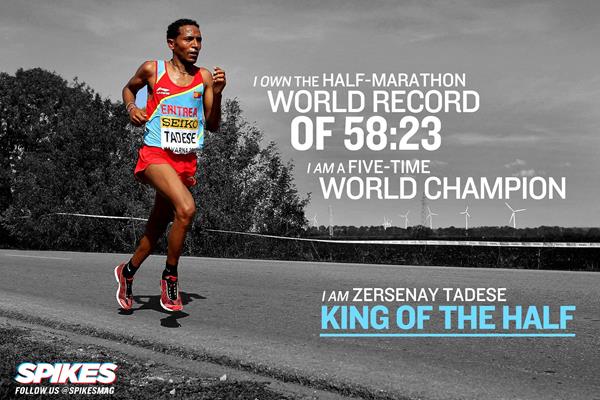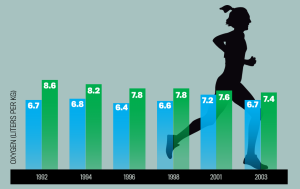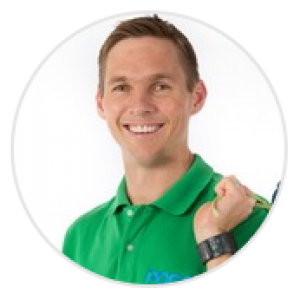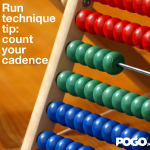3 Ways to Run Faster
3 Ways To Faster Running
Despite what many runners may believe, there are actually only three ways by which a runner can run faster. Many runners look to the latest product, training method, tip they have heard from running colleagues, or latest trend, as the hope for bettered running performance through faster running.
While all manners of tweaks and ‘helps’ may make a difference to a runner wishing to improve their speed, in actuality there are 3 primary ways of improving running performance.
Let’s explore these 3 ways to faster running.
1. Increase your aerobic capacity
Increasing your aerobic capacity can be achieved through training. Most runners are unaware, however, that a ceiling or ‘genetic cap’ exists as to just how far you can train and improve your body’s aerobic capacity. Your aerobic capacity is your body’s natural ‘engine’.
You often hear runners refer to certain runners as having a ‘big engine’. What they are in fact referring to is the genetically determined ‘aerobic capacity’ that a runner is born with. In science terms, this aerobic capacity is referred to as the V02max, which is a measure of the amount of oxygen that can be utilised by the body as a function of the body’s weight. Another way of thinking about V02max is to think of it as your ‘oxygen supply’ ability. It determines how much oxygen your working running body needs as your run. The greater your V02max the greater likelihood you have of running faster.
V02max is expressed as a score. The V02max score is generally considered one of the best indicators of endurance capacity and aerobic fitness. V02max is expressed a number – for example, 70 ml/kg/min. World-class runners would generally have V02max scores above 70ml/kg/min, while your average 70-kilogram, moderately fit male would have a V02max of somewhere between 50 and 60ml/kg/min.
For example, in 2007, in one of the first attempts to study the dominant and uberfast Kenyan runners while at the peak of their ‘powers’, Spanish scientists were able to test and analyse the then world cross country and half-marathon champion Zersenay Tadese. Tadese’s V02max was reported to be a very high 83ml/kg/min. While this is a very high score, sporting legend has it that a world-class cross country skier was once measured as having a V02max of 96ml/kg/min. Is this true or even possible? I suspect it may be but only with some ‘artificial’ assistance.

The current world record for the half marathon was set by Zersenay Tadese in 2010 at the Lisbon Half Marathon. His high V02max is one of the key reasons for his running speed.
Women have smaller VO2max scores, which is the chief determinant in the differences in performance for endurance sports.
The best way to calculate VO2max is by analysis in a controlled setting such as a laboratory. Access to this equipment is usually only found at universities; however, online V02max calculators can covert exercise intensity level (as measured by heart rate) to a score of V02max. While these online calculators are not as accurate as laboratory testing, they can serve as a guide for runners interested in approximating their V02max.
Importantly, though, the runner with the highest V02max is not always destined to be the winner – a runner with a lesser V02max beating a runner who has a higher V02max is possible and a likely common occurrence. When it comes to performance and faster running, both being able to run at a high intensity before lactate acid production and running economy are also important considerations. V02max itself does not guarantee performance, but it is certainly a key element of a runner’s performance potential.
2. Elevate your lactate or ‘anaerobic’ threshold
Unlike a runner’s genetically determined maximum aerobic capacity (V02max), a runner has a large scope to positively change their ‘anaerobic threshold’. ‘Anaerobic’ simply means without oxygen, and ‘threshold’ is when a certain point is reached – in this case, the point where lactic acid begins to flood muscle cells at a greater rate than it can be removed. In other words, the build-up is too fast for the body to be able to deal with the excess lactic acid that accumulates with exercise intensity above the anaerobic threshold. If you have ever felt the ‘burn’ while exercising, you have hit or exceeded your anaerobic or ‘blood lactate’ threshold. You will know that once you ‘feel the burn’, it becomes impossible to sustain speed, power and efficiency. Once this feeling kicks in, it’s a downwards spiral of performance. The anaerobic threshold is expressed as percentage of V02max. So if your anaerobic threshold is 70 per cent, you will start to develop a build-up of lactic acid when you’re exercising at 70 per cent of your maximal oxygen utilisation (V02max).
Elevating your anaerobic threshold can be achieved through what is known as ‘anaerobic threshold’ training, which conditions your body to delay the point at which it begins producing lactic acid. Such training can include fartlek and interval running whereby the runner trains at faster than race pace (that is, at or above the anaerobic threshold) with interspersed rests.
Once the body begins producing lactic acid, it begins a process of slowing the runner down. At some point, the runner is forced to stop. So, the higher the ‘threshold’ can be elevated, the longer the runner will be able to sustain a fast pace.
3. Improve your running economy through better running technique
Whereas a runner’s V02max determines the runner’s oxygen supply, running economy determines a runner’s oxygen usage. If a runner can lessen their oxygen use than they will run faster, as the oxygen that is supplied will in effect ‘last longer’.
In essence, running efficiently is simply about focusing on a runner’s ‘fuel economy’. As a runner, the aim is to use or expend as little fuel as possible at a given running speed. In this way, running economy in humans is analogous to an automobile’s fuel economy.
As an example, Zersenay Tadese was in 2007 reported to have what was at the time one of the best running economies ever measured (1). Tadese used less oxygen at a given running speed than any runner who was tested before him. The researchers recorded the total volume of oxygen Tadese used to run one kilometre measured as ml/kg/km. Tadese used just 150ml/kg/km running at 3:06/km pace. In comparison, Frank Shorter (our 1972 Munich Olympic marathon hero who spawned the first running boom – refer to chapter 3) was recorded as using 196ml/kg/km at 3:06/km pace, and elite Caucasian runners were recorded as using 211ml/kg/km running at 3:09/km pace.
Running economy is influenced by both physiological and biomechanical factors. Tadese’s incredible running economy was attributed to the small size of his calves relative to other elite Spanish runners included in the study who had larger calves (1). It was not, however, only Tadese’s calf size that resulted in his superior running economy. Tadese’s smooth and elegant running technique was also another key factor for his unprecedented running economy.
Technique improvements allow a runner to run faster but use less fuel because they have become more efficient or economical. Simply stated, running economy is about getting more ‘bang for the buck’. It’s about getting the most forward movement for the least amount of energy expended.

When Paula Radcliffe’s running economy improved to surpass the oxygen supply (V02max) the surplus of oxygen propelled Paula to a Marathon World record (source Runners World).
Over the last two decades, several running technique methods have emerged that aim to teach runners how to improve their technique. Two of the most popular methods are the ‘Chi Running’ and ‘POSE’ methods.
Chi Running is a method of running developed by Danny Dreyer in 1999 that blends the physical with the spiritual ethos of tai chi. The method uses the principles of tai chi to focus on alignment, relaxation and proper form when running, and emphasises posture, core strength, relaxed legs, mindfulness and a mid-foot landing on impact with the ground.[iv] (With a mid-foot landing, the entire foot more or less touches down at the same time.)
Meanwhile the POSE method was developed in the 1970s by two-time Olympic coach Dr Nicholas Romanov. The method is similar to Chi Running in that it too teaches technique cues and body positioning with the aim of improving a runner’s performance and reducing the runner’s injury risk. The key distinction between the two is that the POSE method advocates forefoot striking of the foot on impact by cuing to place the foot on impact as close to the centre of the runner’s mass as possible – in contrast to the Chi Running method, which advocates a mid-foot foot strike.
One other key running technique method that has been popular throughout the last decade in Australia is ‘Evolution Running’. Evolution Running’s coach Ken Mierke has said that runners of all levels can improve their economy by somewhere between 4.5 and 8 per cent – simply by improving their technique. Projecting this improvement in running efficiency, by way of developing good running technique, into real-time gains could equate to a 2 minute and 42 second time saving per hour of running!
Ken was quoted as saying
‘Differences between runners are consistently due to technique more than to fitness. Faster runners are more fit, but technique plays a greater role in sustained fast running than fitness does’.
It is imperative to remember that great runners are born, and then trained. You can do a great deal to improve your running economy and performance by making technique changes.
Five Key Principles of Good Running Technique
Five key principles constitute good running technique, and the most fluid, graceful and fastest runners on the planet exhibit these characteristics as part of their running form. Even if you’re not aspiring to be one of the world’s fastest runners, your running speed would be well served by becoming familiar with the principles. Once awareness has been developed, you can then integrate the principles into your running technique. Not only will your running speed improve but also your chances of developing an injury will markedly reduce.
The five key principles that constitute great running technique are as follows:
- Do not overstride/run with a good cadence
- Minimise bopping up and down (vertical displacement) click HERE to read more.
- Optimise foot strike placement (where your foot lands)
- Optimise your body position, click HERE to read more.
- Utilise your natural springs
I hope this post has enlightened you as to what it takes to get faster as a runner.
Please feel free to leave any comments or questions you have below.

Brad Beer (APAM)
Physiotherapist, Author You CAN Run Pain Free!, Founder POGO Physio
References
(1) A. Lucia, J. Olivan, J.Bravo, M. Gonzalez-Freire, and C. Foster. 2007. ‘The key to top-level endurance running performance: a unique example’. British Journal of Sports Medicine, vol 42, pp.172–174.
(2) ‘Chi Running’. Wikipedia. http://en.wikipedia.org/wiki/ChiRunning. Accessed 8 October 2014.








